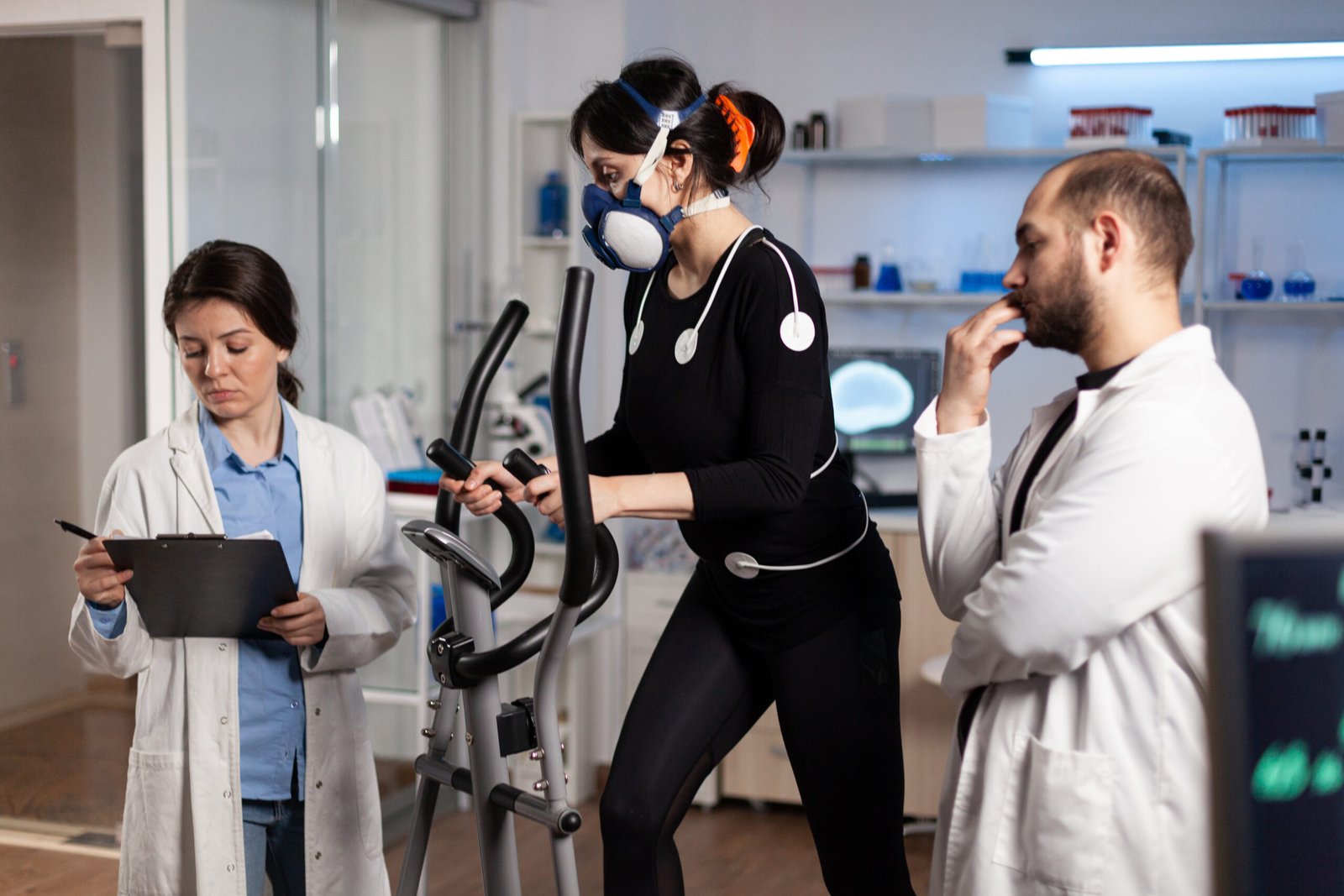“Sports technology labs” : Revolutionizing How We Play

Technological developments have changed how athletes get ready for, perform, and recover following a competition. Because “sports technology labs” are hubs of invention where sports and science converge to explore human limitations, sports technology labs are at the forefront of this transformation. In many different respects, including enhancing performance and lowering injuries, these labs will be crucial in determining the direction of sports.
Examined in this paper are the purposes of sports technology labs, how they enhance the sports environment, and how they shape athletes of the future.
The Evolution of Sports Technology : From Past to Present
Having existed for some time, sports technology labs has evolved under numerous influences. Technological developments in fields such wearable devices, artificial intelligence, and simple fitness tracking systems have progressively stretched the bounds of athletic performance over years.
Emergent in the 1960s and 1970s, video analysis methods helped teams assess athlete performance.
Personal fitness tracking gained popularity thanks in part to wearable devices as heart rate monitors and pedometers introduced along in the 2000s.
Modern sports technology labs use motion capture, artificial intelligence-driven analytics, and biometric data to provide more exact performance and health insights today.
As technology develops and so does its use in sports, coaches and athletes both can benefit from enhanced accuracy, customized insights, and better decision-making enabled by these developments.
How Technology Enhances Athletic Performance: The Modern Tools of the Trade
Sports technology labs leverage a variety of advanced tools to optimize athletic performance. These include:
- Motion Capture Systems
- Real-time motion tracking with cameras and software allows an athlete’s posture, form, and areas of inefficiencies to be precisely shown. This information aids coaches in creating focused training schedules.
- Biometric Interpretation
- Monitoring an athlete’s heart rate, oxygen saturation, and other key indicators enables customized training plans fit for their capabilities and objectives.
- Sports equipment like aerodynamic bicycles, ergonomic shoes, and personalized gear for best performance is currently created using artificial intelligence driven equipment design.
- Director of Biomechanics at the SportsTech Institute, Dr. Alex Johnson, says “sports technology labs are the frontier of innovation, where science meets the playing field.”
Innovations in Wearable Technology: More Than Just a Fitbit
Wearable technology has gone far beyond simple step counting. Today, wearables cater specifically to athletes with features designed for comprehensive data collection and analysis. Examples include:
- Smart Clothing
Equipped with embedded sensors, smart clothing tracks everything from muscle usage to hydration levels.
- Performance Bands and Watches
Devices such as the WHOOP band or Garmin watches offer detailed analytics on sleep, recovery, and strain.
- Pressure Sensors
“sports technology labs”Shoes and insoles equipped with pressure sensors analyze foot placement. And gait, helping runners improve efficiency and avoid injury.
A notable study conducted by the University of Technology Sydney revealed that athletes who utilized wearable technology for their training had a 20% boost in running efficiency. This finding highlights the concrete advantages that these advancements offer.
Impact of Sports Technology on Injury Prevention: Keeping Athletes in the Game
Sports technology labs oratories are experts in reducing the likelihood of injuries, which is just as important as improving performance. Athletes can reduce their risk of injury with the aid of these laboratories’ biomechanical evaluations and predictive analytics. Remarkable progress encompasses:
- Predictive Analytics: AI evaluates past injury data to predict future risks, allowing trainers to adjust workout intensity and techniques accordingly.
- Rehabilitation Tools: Virtual reality (VR) and robotics aid athletes during recovery, expediting their return to peak performance levels.
- Stress Monitoring: Analyzing stress markers helps prevent overtraining, a leading cause of sports-related injuries.
The Australian Institute of Sport reports a 30% reduction in injury rates among athletes participating in programs facilitated by sports technology labs, illustrating their effectiveness.
Case Studies of Successful Sports Technology Labs: Their Stories of Triumph
sports technology labs Several renowned sports organizations have successfully utilized technology labs. Here are some highlights:
1. New Zealand All Blacks
The world-famous rugby team credits sports technology labs for a 22% reduction in player fatigue and a 37% decrease in missed tackles. Real-time performance tracking and personalized recovery plans have been critical to their continued dominance.
2. Premier League Clubs
Teams in the English Premier League have seen a 15% improvement in passing accuracy and a 10% decline in muscle injuries through advanced biomechanical and statistical analysis provided by sports technology.
3. Team USA Olympic Training Center
By means of AI-driven insights, Team USA’s training facility has streamlined athlete meals, sleep routines, and recuperation, thereby improving endurance and general performance.
Professional athlete John Davis notes, “Without the insights from sports technology, we would be training and competing in the dark.”
Sports Technology Future Directions: What Next for the Game?
The fast speed of invention indicates for sports technology labs oratories fascinating future possibilities. These patterns are worth observing:
Personalized coaching systems run by artificial intelligence will offer real-time technique and strategy feedback.
For athletes, developments in brain-computer interfaces will improve cognitive endurance, response time, and attention.
Manufacturers of sustainable sports tech are investigating eco-friendly materials and energy-efficient instruments with an eye toward environmental solutions.
AR, or augmented reality, lets players practice as though they were in a real-time competition.
“The marriage of sports and technology is not just about performance. It’s about preserving the lifetime of athletes’ careers,” notes Head of R&D at Elater Sports Wearables.
In essence, sports technology labs are vital for the future of athletics.
sports technology labs laboratories are revolutionizing sports overall, not only helping players. These labs offer the means athletes need to push the envelope of their ability while remaining healthy and injury-free by combining science, technology, and analytics.
“sports technology labs”Constant advancement in the sector depends on the cooperation among sportsmen, technology entrepreneurs, and researchers. Perfectly summed up by Dr. Alex Johnson is “The future of sports is being shaped in labs. Where the next breakthrough is always around the corner.”
its oratories will keep redefining how we play, train, and win—herding in a new age of athletic excellence—with the unrelenting speed of invention.


